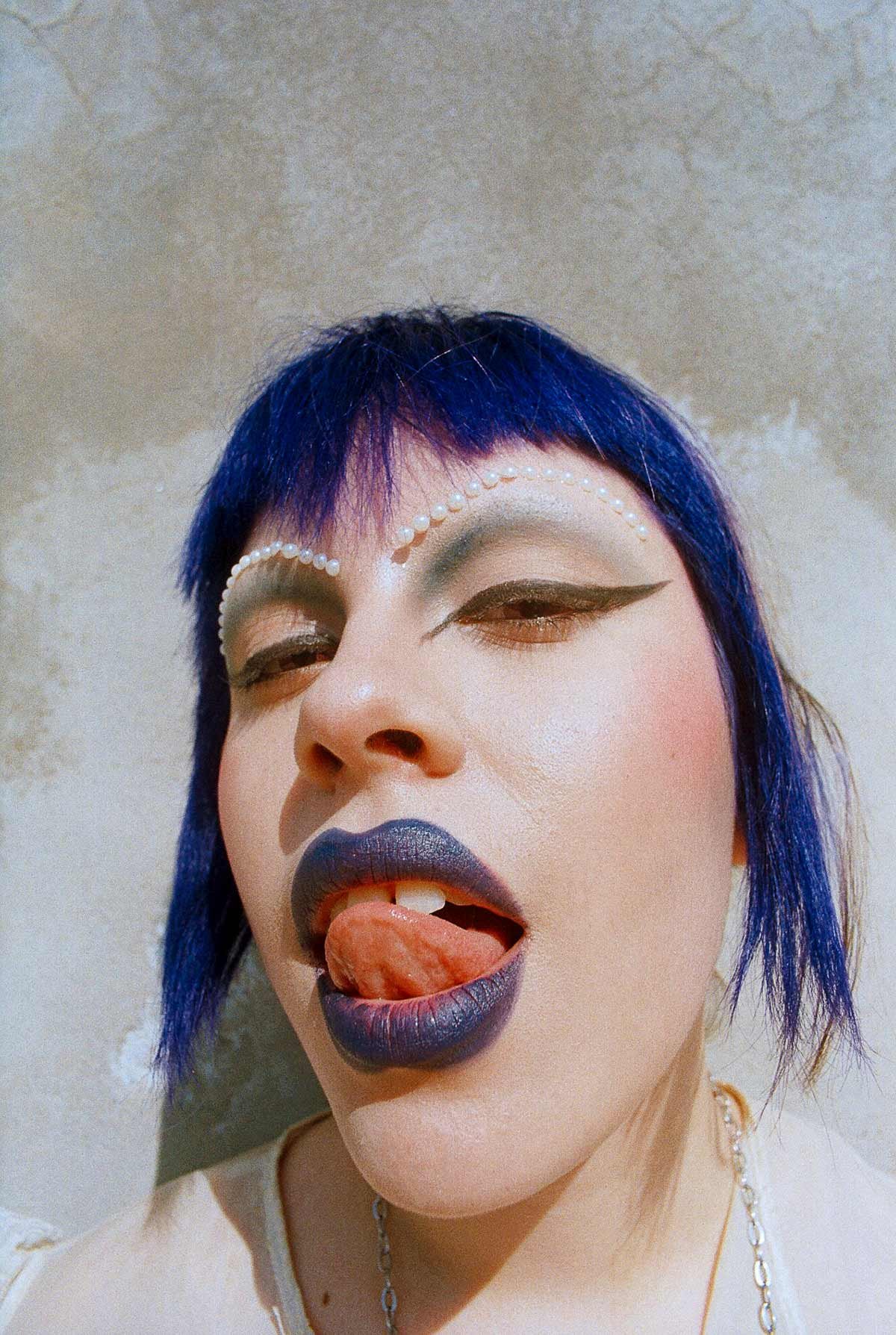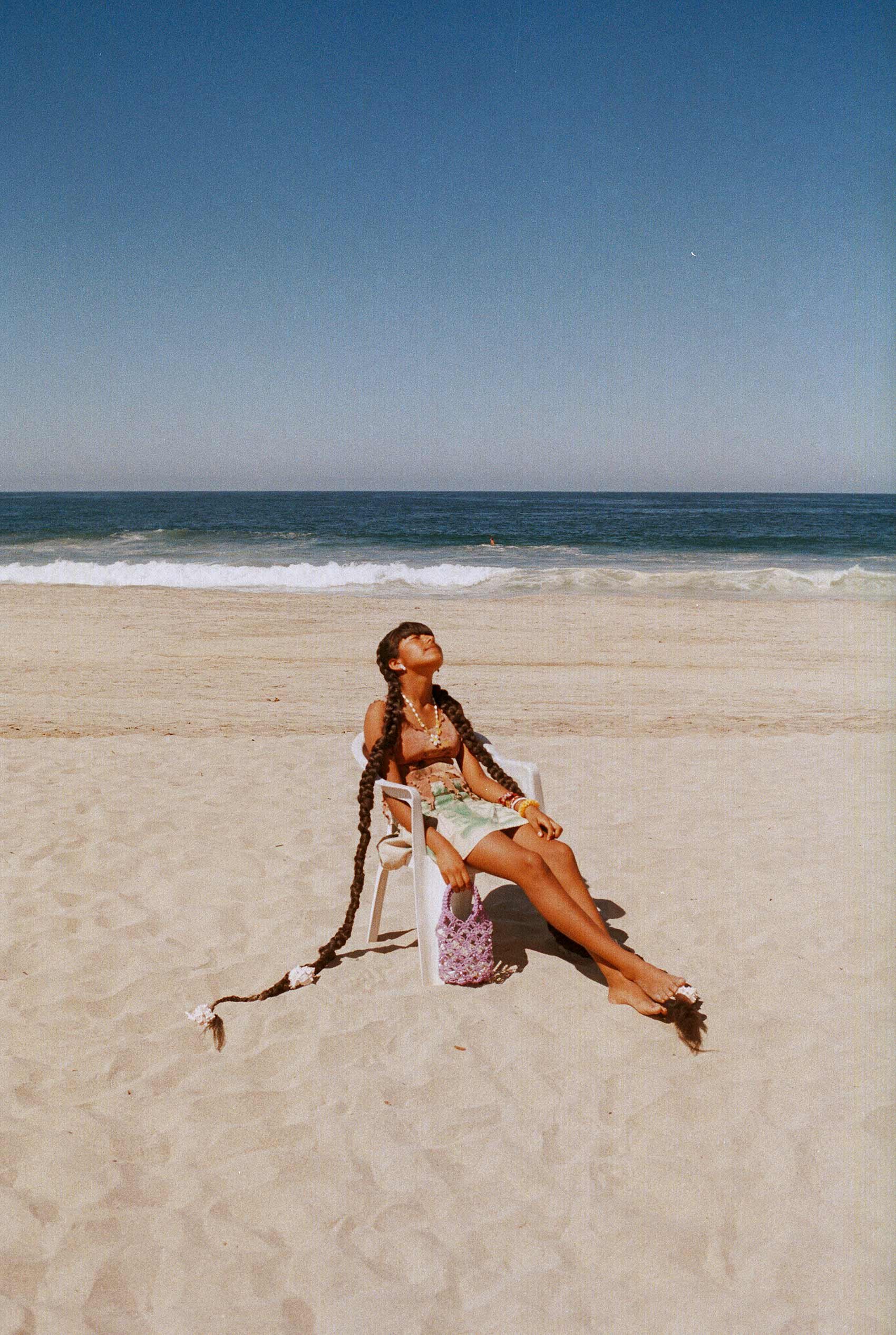Dignifying Beliefs Through Photography
Featuring Andrés Navaro Words by Nastasia Khmelnitski
Instagram Website
Vibrant - in movement - young in spirit - and passionate about the world around is Andrés Navarro’s perspective. He captures frames that add a fresh breath of air depicting the beauty of the visited places. He emphasizes the individuality of people from various backgrounds with a range of stories. He researches and brings forward faces that are different and redefine the boundaries of fashion magazines. Andrés is a moving force of the community he lives in, and his desire to inspire is igniting.
Andrés Navarro Aguilera is a Mexico City-based photographer, originally from León, Guanajuato. Andrés indulges creators to add social meaning to their work, challenge the current standards, and misconceptions to lead towards a change. By providing a unique voice and representation of the LGBTQ+ community, by collaboration with artists, Andrés wishes to assure the diversity of voices is being heard, and more importantly, accepted in his country.
We speak with Andrés about his childhood memories, the decision to pursue photography, the difficulties artists face in the creative scene in Mexico, and the LGBTQ+ community. Andrés tells us about his old dream seeing an angel hunting him down and his desire to observe the surroundings.
‘Curiosity, I guess, it just started to grow and grow until it led me to the point where I was immersed in photography and became a key on my path as an artist’
Hi Andrés, how are you doing? How did your day start?
I am very good! Mexico City has been sunny for the past days :) and right now I have a lot of time to dedicate to the things I always wanted to do but never had time to.
What was your path to photography, and when did you decide to be in this profession?
My path was really organic in the way that I just started doing photography because I was drawn to it without any pressure or classes that dictated how to do what I was doing. Curiosity, I guess, it just started to grow and grow until it led me to the point where I was immersed in photography and became a key on my path as an artist.
At the moment, I decided to study visual arts. I felt really committed to photography, and I think that was the point where I unconsciously decided to follow this profession.
I learned how to develop film, dropped out of school, and moved to Mexico City, where I started working as a professional photographer by coincidence because I was collaborating with my friends working on a series. We got the attention of some brands and companies that started to contact us for commissioned work, and I saw it as a potential way of earning money to keep producing my stuff.
‘I sometimes take elements of the Mexican popular culture and place them in contradictory scenarios, or take pictures to give visibility of what the average Mexican ignores’
Tell about your hometown, where were you born and what do you remember from the streets, your school, the playground?
I was born in León, Guanajuato, which was a city in progression when I was growing up, so it was not a big city, but it had the standards of a big city. I think most of my memories while growing up are of the surroundings of the places I went to. I used to observe a lot. My house was on the outside of the city, and I had a lot of contact with nature because of this.
A lot of Cerros and dry mountains and itchiness because of mala hierba that grew on the ground. It was really sunny too. Strangely I remember some dreams as well. I remember a dream about an angel trying to hunt me, but I was always inside the house that had a lot of windows and was fully closed so he could never get close to me. But I would always see him moving through the air outside the house.
In your photos, there is a prominent presence of elements from the Mexican culture and tradition representing the uniqueness of people. What is important for you to capture, and how are you striving to present Mexican people?
I think in Mexico we have a lot of repressive statements in our culture that for me and my community are useless and don't represent us. It's important to create our narratives that are not defined by our past experiences and/or the places where we were born, to fully own our minds and bodies in the present.
For me, this has been really important to portray in my photos and give a safe space to all the individuals who want to experiment with their whole spectrum of emotions and representations of themselves. I sometimes take elements of the Mexican popular culture and place them in contradictory scenarios, or take pictures to give visibility of what the average Mexican ignores.
Recently, a lot of Mexican artists and creators have emerged. Could you describe the creative scene in the city, what are the main places for creatives to meet?
I feel a lot of support from and interest in collaborating with the creative scene in Mexico City specifically because outside this city, in Mexico, it's hard to find support as a queer/non-academic artist. I think a lot of people who create here in the city have been through this rejection and have had to relocate. This makes us empathic when it comes to our creative process and ourselves. I mainly meet other artists through friends or social media.
When reading about photographers worldwide, what are the achievements you think are of utmost importance in this profession?
To dignify our beliefs via images.
You meet a lot of different people with distinct backgrounds and unique stories whose portrait you capture showing the authentic side, that is only visible through your perspective. What is the most captivating story you heard from one of those encounters?
It's captivating when we realise our uniqueness and our beauty. I have heard friends saying UGH I WISH I LOOKED LIKE THIS IN REAL LIFE, so I’m always there reminding them they look like that taking their pictures and repeating them to OWN IT.
‘I think we are not under the sheets any longer, we are here, being seen, being heard, and that already makes change on how we perceive the world and the limitations that existed before for young people’
Another recurring theme is the rebellious youth and a presentation of the LGBTQ+ community. How do you think a creator can influence the norms in one’s country and become a change-maker?
By giving visibility and voice to what’s been hiding underneath the surface. I think we are not under the sheets any longer, we are here, being seen, being heard, and that already makes change on how we perceive the world and the limitations that existed before for young people.
What are some of the must-see places in Mexico that anyone has to visit?
I enjoy going downtown and getting lost. You can get a glimpse of what Mexico is by standing in the middle of it. I also really like going to random barrios (quarters) around the city and soak in the energy, imagining how it would be to live there.
What contributes to the feeling of happiness, or what makes you happy?
Being able to connect with myself and other people through art and taking pictures of everything.
What’s next?
I would like to travel more and be able to see the whole world without stigmas.













